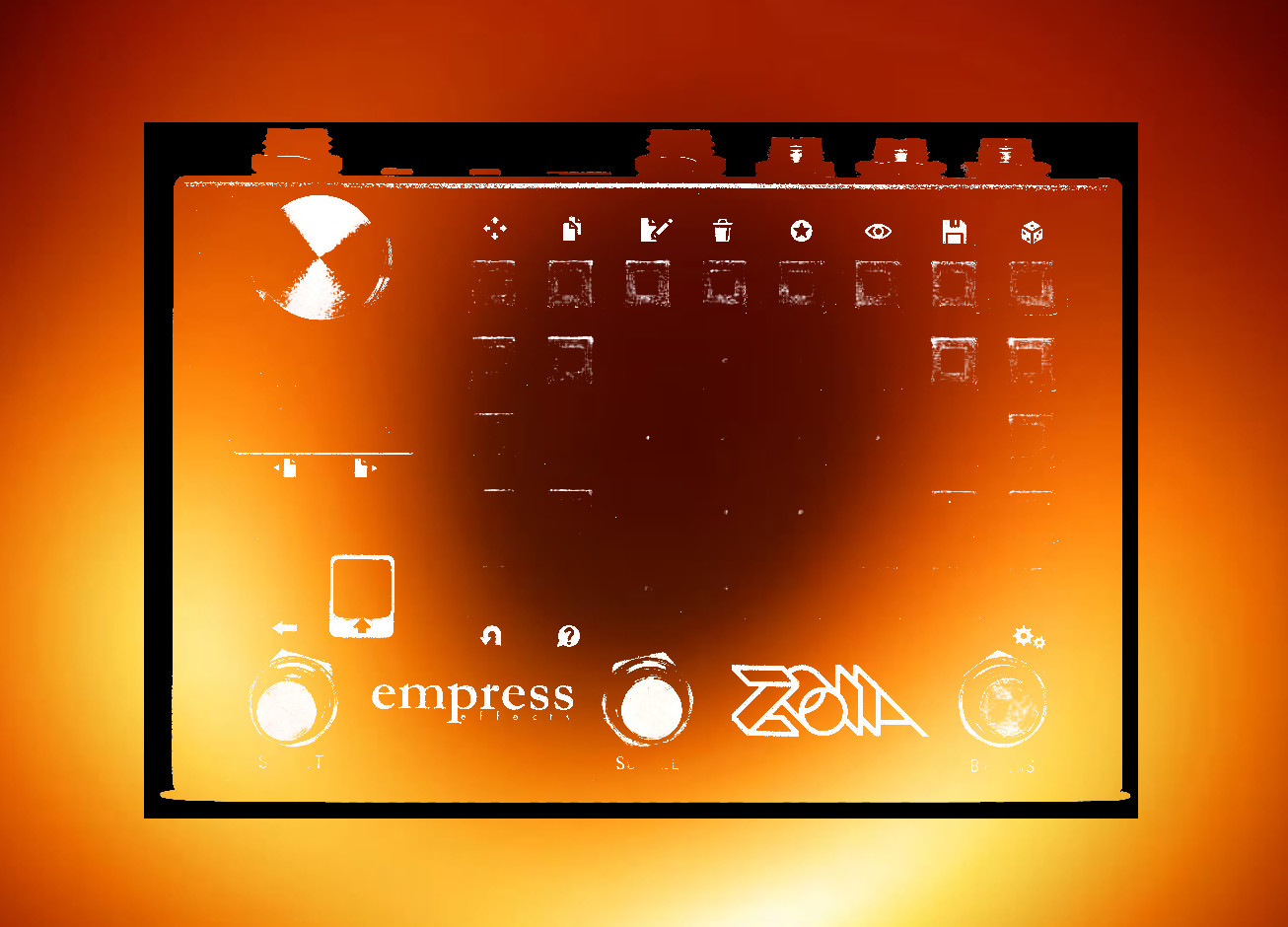Continuing my series of ‘barberpole effects named after fictional barbers,’ Ed Crane emulates a barberpole phaser, as opposed to a flanger, like old Floyd does.
Now, I’m not entirely sure how to produce a barberpole phaser from all-pass filters, so this might not be a, per the letter of the law, phaser, but the sound it produces is very much like that of a barberpole phaser. Instead of all-pass filters, it uses band-pass filters, spaced an octave apart, to create notches; in theory, it is a five-stage phaser, as there are six filters, producing a notch between each.
As the resonance of the filters is increased, notches appear and become more pronounced, and the phaser sound is achieved. The filter frequency climbs (or falls) continuously, across the octave(s), with the use of LFO-controlled VCAs to disguise the end of the climb, resulting in an effect much like a constantly rising tone.
I originally built the patch around tap and MIDI clock, but the speeds required for a barberpole effect are very slow, and (I hate to say this) the kinks of the clock dividers are not fully ironed out, it appears. Slow speeds and a bit of gain before the patch do a great deal to bring out the effect.
The signal path is stereo throughout.
A special thanks to my patrons on Patreon for their support: Rob Flax, Stepan Grammatik, brockstar, Mats Unnerholm, D Sing, Will Scott, drew batchelor, Miguel, Steve Bragg, and Joab Eastley!
If you would like to support my work on ZOIA, please visit patreon.com/chmjacques
Controls:
Left stompswitch, momentary — toggles between three modes: barberpole up, barberpole up and down (split by channel), and barberpole down
Front page:
Depth — the depth control is really put in with three specific settings in mind: .333, .666 and 1. That is because its range covers three octaves, and the barberpole effect is best heard as it translates across an octave. You can try out settings in between these; they aren’t bad, but the classic effect will be found at one of those three settings.
Rate — this control goes all the way up, but the best barberpole effects are found with very slow rates ~.050 or lower
Resonance — as resonance is increased, the phaser effect becomes more pronounced; above a certain point, it takes on a “metallic” quality; as resonance increases, so does gain, and at the highest resonance levels, you may have to adjust the volume of the input signal a lot to keep the resonant filters from creating distortion. There are some interesting tones found at extremely high resonance, but I mostly park myself in the .2 to .4 range
Stereo depth — this is an interesting control. The left and right channel are designed to overlap, out of phase. At 0 stereo depth, the output of either channel is fed to both outputs. As the spread increases, they begin to pan, eventually reaching hard left and hard right. In this setting, it can seem as though pitch continuously rises and pans; at less extreme settings, it can add a sense of “movement” to the sound
Volume — I don’t often move the output gain control to the front panel, but the relationship between resonance and gain is so pronounced that it’s necessary; you will want to watch the volume as you push the resonance up, especially above .3 or so
Mix — wet/dry mix
Sound clip:
I use an MF Drive throughout the guitar part, as gain really brings out a barberpole phaser:
0:00-0:55 — I raise the depth from .333 (one octave) to .666 (two octaves) to 1.000 (three octaves), with each increase making the phaser steeper and more extreme.
0:55-1:10 — I set the stereo spread to maximum and have the barberpole pan across the outputs.
1:10-1:50 — Demonstrating the up/down setting and the down setting.
1:50-5:50 — Hello volca drum! Welcome to the party!
(2:55) Bringing the rate up diminishes the barberpole effect, but it can still sound pretty cool. Especially with a lot of resonance.
(3:30) The different modes can all bring out different things in a sound.
(4:00) Extreme resonance burps!
(4:20) Back to some slow barberpoles.
(5:20) Let’s break it down.


